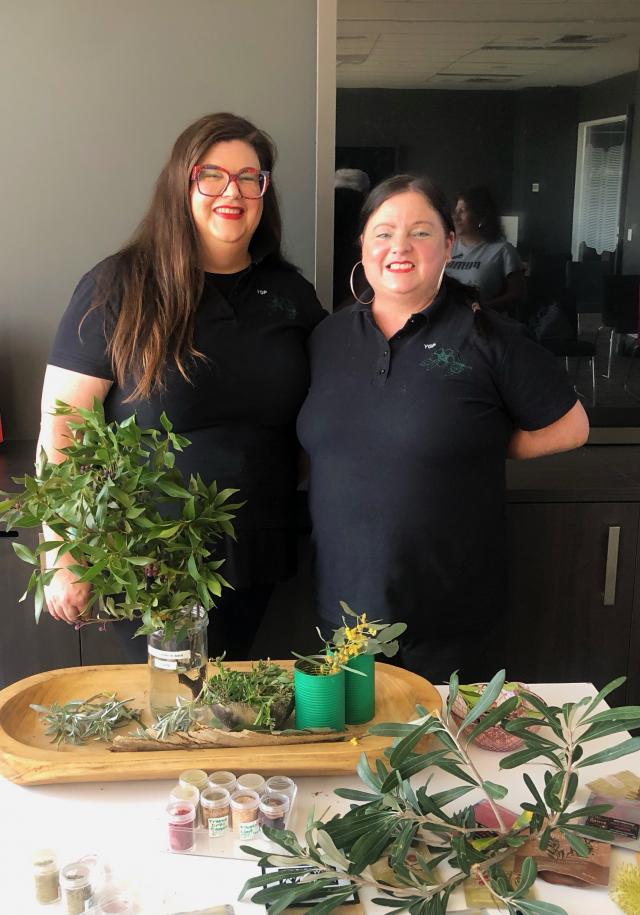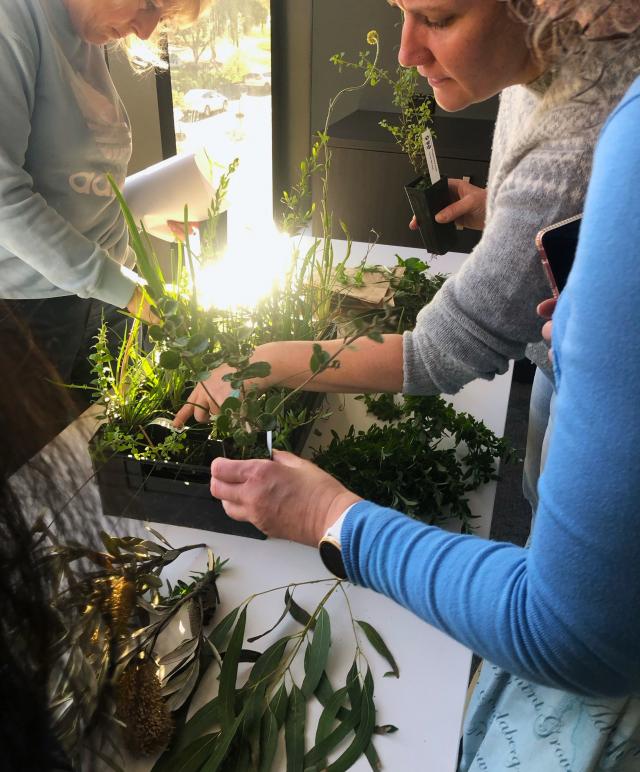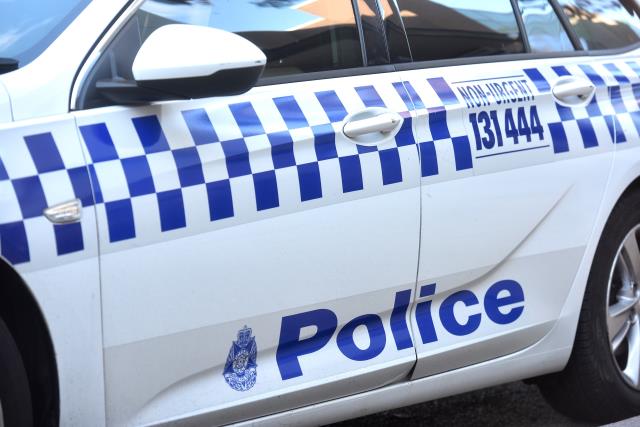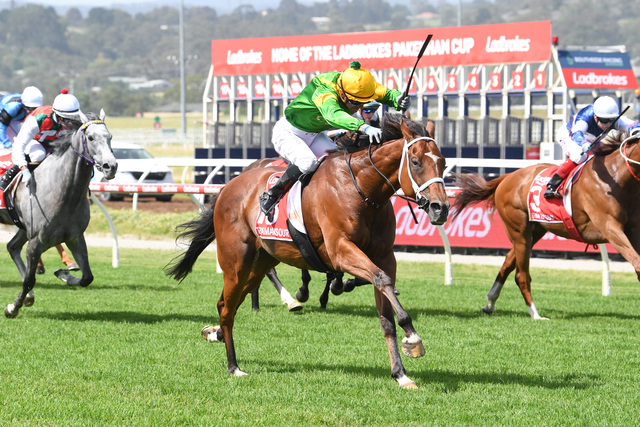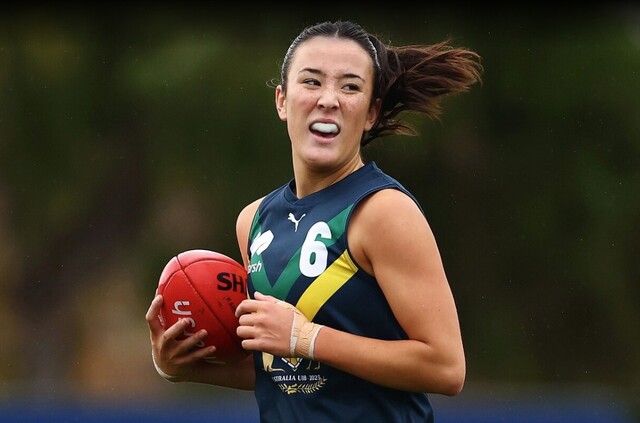As part of their NAIDOC week celebrations, Casey’s Connected Libraries hosted an Introduction to Bushfoods event, where residents were able to sample and learn about the south-east’s most delicious and diverse native plants.
The session was run by sisters Kylie and Kursty, proud Dharug and Wiradjuri First Nations women who grew up on Wiradjuri Country in Central NSW who have been living and working on Bunurong/Boon Wurrug land for the past 14 years.
Kylie runs Your Green Prescription, where she teaches native plant education, bush dyeing, nature journaling, Wayapa, and Shinrin Yoku (forest bathing) to all ages.
“My passion is to reconnect the disconnect some experience and promote nature as therapy,” she said.
“We can all learn about the local plants and edibles unique to our area and be growing them, using them in our daily lives by eco-dyeing our clothes, learning about the medicinal properties, adding them to our diet, supporting Indigenous Suppliers and Indigenous allies.
“Let our shared community know that we have an amazing array of plants here in Victoria, they are also like superfoods- full of goodness.”
Around 20 attendees gathered to listen to Aboriginal foodies Kylie and Kursty showcase various plants, powders and berries fit for consumption.
Kylie believes it is important to break stigmas attached to sourcing foods directly from the native flora.
She explained the number one stigma she encounters is “that they are expensive and difficult to incorporate into our diet or that supply is an issue”.
“People are amazed to learn what plants they have growing around them specific to the local area and how easily they can be identified and used,” she said.
“You don’t have to be a chef or a bushfoods expert or Indigenous to use them.”
Not only are the plants edible and delicious, they mimic many flavours we are already used to.
“The majority of herbs, spices and flavours we have in our diets have a native alternative with a similar flavour profile,” Kylie said.
“Many people are surprised to find out that we have native basil, thyme, mint, parsnip and wattleseed for a coffee caramel flavour for example.
“We have a vast supply we can be purchasing and using.”
Kylie emphasised the multifaceted use of the plants, with traditional uses encompassing as much of the plant as possible while being careful not to over-forage.
Participants were able to smell, nibble and feel different native plants, including old man saltbush, Warragul greens, bower spinach, sea celery, wattle, lilly pilly, finger limes and bush tomatoes, among others.
Alongside each tangible sprig of edible nature, Kylie and Kursty offered crucial knowledge about the uses, growing habits, medicinal properties and flavour profiles of the plants.
Participants were encouraged to taste the plants, the deliciously spicy pepper berries, the invigoratingly sour Davidson plum and the satisfyingly salty coastal ruby saltbush.
Some examples were ground down into their powder form, including cinnamon myrtle, wild rosella flower and strawberry gum.
Kylie and Kursty ran through some of the wonderful places Casey residents can source native plants to incorporate into their gardens.
“The majority of locations across Victoria have Indigenous nurseries who supply local species of plants and information on how to grow and establish them,” Kylie said.
Some councils have set up their own nursery promoting these plants for example Frankston Indigenous Nursery, Southern Dandenong Indigenous Nursery, Conservation Collective at Somerville which is run entirely by volunteers with a large selection of Plants for sale.
“A lot of small businesses provide care information, recipes other useful resources to educate around the use of them.”
Kylie also explained how First Nation’s intuition led to the use of banksia flowers as water filters, with their morphology akin to that of a filtering straw used in modern-day water bottles.
After the information-rich presentation, participants were given the chance to try a variety of samples.
Each infused with native plants discussed in the session, the samples included bush pesto, bush tomato chutney, saltbush and wattleseed damper, chocolate wattleseed slice with Davidson plum sprinkles, bush apple paste and green ant marmalade.
Excited attendees filled up their bowls, with many going back for seconds.
Kylie and Kursty also brought in a selection of potted native plants for the participants to take home, including Murnong (yam daisy), hedge wattle and cut-leaf mint bush.
Kylie said her favourite thing about making bushfoods a part of her everyday life is that it allows her to pass on traditional uses for plants which share our land.
She also loves them for their abundance of nutrition.
“They are Superfoods which contain healthy properties like iron and vitamin c, along with medicinal qualities,” she said.
“It is easy to find native alternatives and obtain them locally or grow them and virtually all of the plant is used.”
Kylie said she uses makes cordials and syrups from leaves and tea, but she makes use of her plants in more than just her cooking.
“Eco dyeing” can be achieved using one of the “932 eucalyptus species or the berries from the Ruby Saltbush for deep pink/red, colourful tones”, which Kylie emphasised “aren’t toxic to our bodies” and are great for “saving water”.
Kylie hopes that one day knowledge of precious native plants will be common to everyone.
“It’s my wish that native plants and bushfoods information will be taught to all Australians, starting within the school system with our younger generation along with an accurate history of our nation,” she said.
“Lets all plant a native plant, gift one to someone, have a date with nature and eat our local foods.”

